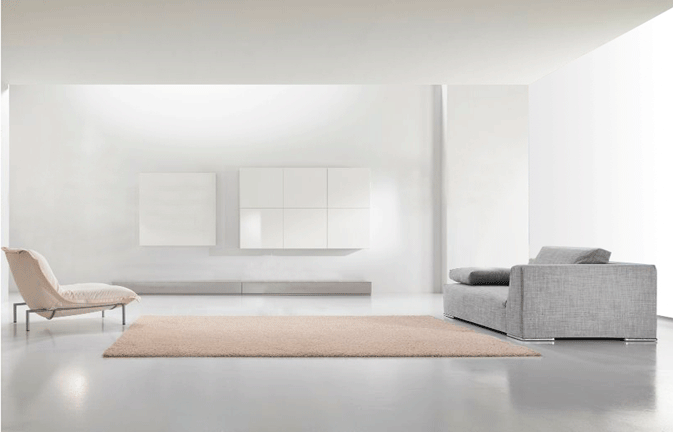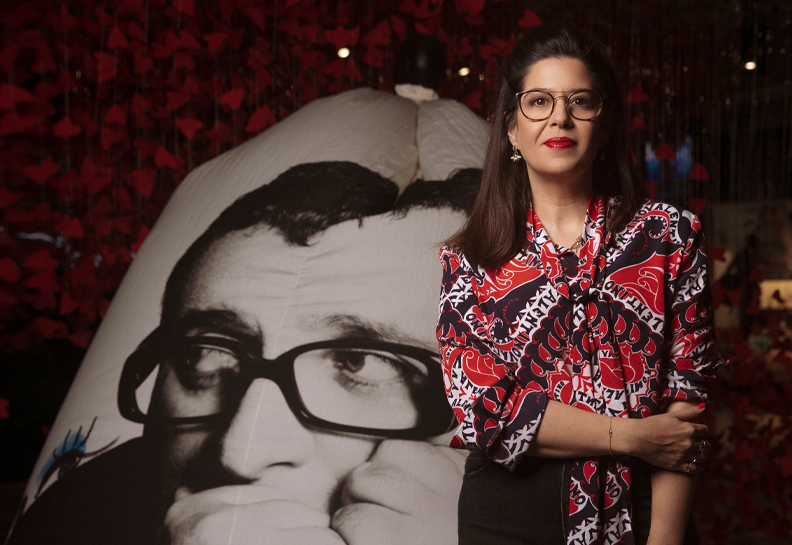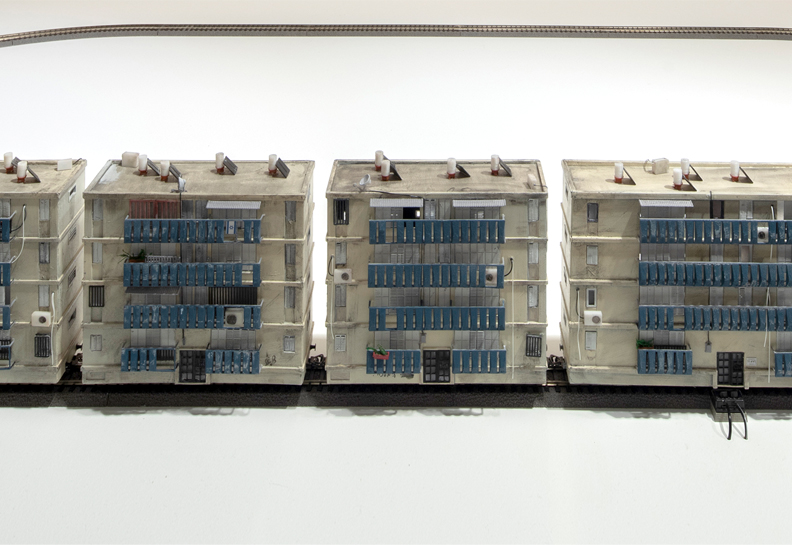We’re used to looking at society as being compiled of people who differ from one another but there are some people who do, behave and think in unconventional manners.
We’re used to looking at society as being compiled of people who differ from one another. Some are more instinctive, impulsive, energetic, and some are more introverted, slow and aloof. There are some people who do, behave and think in unconventional manners. These are the people who do not possess the will, tolerance or ability to maintain a normative day-to-day conduct, and are therefore perceived as being “different”. In the past, we were tolerant towards some forms of irregularities; every neighborhood and town had their own “fools”.
In these past few decades, change is taking place; society labels more and more people as being “different”, and distinctions and criteria that did not exist in the past, as hyperactivity, attention deficit disorder and dyslexia, allow the labeling of more and more people. As the labeling increases, so does the amount of characteristics we describe as being different, so much until it is hard to find the “normal” in one whole human being. To “win” a label, means taking people out of the general public, and virtually, or physically, imprisoning them behind the “normative fence”. This is indeed the Modern way, as Michel Foucault noticed it, to mark the defected and to lock them in an asylum for the lunatic, handicapped, old, ill, imprisoned… to exclude, and also to prevent others, such as immigrants who knock on doors, to be included in our society. Whoever is not normative is not wanted, and therefore, great effort is being put towards preventing them from their penetration, stay and disturbing influence. The number of citizens who are being excluded from society for crimes they committed, and who are sentenced to go to prison in the US raised from 300,000 prisoners in 1970 to 2.3 million prisoners today, a growth of 700%. In Israel, the number of prisoners doubled in the last ten years. It is not the crime that was intensified, but the normalization of society, its design into a homogenous entity.
Is the world losing its mind, or do the standards solidify, fences rise higher and the fear from others and us overcomes every option for empathy? Seemingly, today we take more actions to “fix” the different, however, in actual fact, we precede to categorize them as being different. As a society, we throw these people over the “normative fence”, and take it as a starting point to allegedly put in effort to include them and act in their best interest, to normalize them.
Recently, I read that it is customary to design special settings for hyperactive children, spaces that are called Stimulus Free. Spaces that are free from stimulations, that lack motivations for action, block behavioral changes and distraction, spaces that allow a disturbance free concentration. Their design is characterized in dividing the area into smaller spaces, each devoted to a specific activity, without a hint and a possibility for an alternative application, so that the child will concentrate without getting his mind wondering off. The gaps between the furniture are being stretched to their limit so that children will not interrupt one another. The rooms exclude any ornaments that might create associations that distract from the matter itself, a diversion from the function that is being turned on in that same room in that same moment. The counselors are usually dressed in plain black, again, stemming from the will to not induce the wondering of thoughts to imaginary territories and loosing concentration. While reading the above design guidelines, I couldn’t prevent the association that awakened in me.
I asked myself, aren’t the guidelines to designing Stimulus Free spaces surprisingly similar to the characteristics of Modern Design in general? – Functional, aesthetic, avoiding every element with a narrative nature such as decorativeness and separates between functions. There are plenty of examples within prestige real estate brochures. All pride themselves in an enormous lounge, where the larger the space between people is, the whiter it is, and the cleaner it is – the more luxurious it is. A rational design for a rational person? Our apartments are divided into rooms, and each room has a defined designated function. The kitchen is where you cook, the dining room is where you eat, the living room is where you host, and there is a bedroom, a nursery, a study room… and we don’t mix between them. It seems so natural to us, so rational, we are so “normalized” that every deviation from this functional division appears to us as a disruption of order. As an example, I will mention that a dedicated room for newborns, which is being neutralized from every stimulus, noise and changes in the environment, “Stimulus Free”, as customary, holds back their development. Lay babies down in a crib in the living room’s tumult and they will grow up to be healthier.
We laugh when children think that eggs are farmed in the grocery store. The hens and the coop have vanished away from the eyes of the urban population, and in fact, the grocery store itself disappears in favor of the much more efficient supermarkets and shopping malls. Today, we are certain that in order to make coffee we need a capsule in a certain color that you put into a machine that pours coffee into a mug. For every function, an instrument, a piece of furniture and a place were designed. It seems that every day we need to know less about how to do things. Back in the days, in order to make coffee, one needed to have an understanding about coffee beans, their preparation, their grinding… up to the way the coffee should be poured. Today, everything is ready-made for us and we are only asked to consume. There is no need to understand how things are made, long live the layman. We are constantly loosing skills in favor of technology, become absent of basic survival skills, and if technology will go on strike we will remain helpless. Design appears as making functions more efficient, and in realization dumbs us down. When did you last bump into something that is not packed? The kitchen turned into a place where you open boxes of food, X’s Pizza… X’s Hummus… X’s soup… Oh, how I was thrilled about a pie that was made of the Malva leaves that grow wild everywhere. All you need to do is just to go to the near corner of the street and pick them gowning wild in the gardens. However, if you know how to pick and open boxes, you are already seasoned for the modern life.
We live in a period of services. Every single thing has an expert that will offer the needed service. Who knows how to change a light bulb or a filter, who knows why the printer stopped printing…. Who knows how to fix the car… Who doesn’t have a consultant, a real estate agent, a doctor, a director, an assistant, a fixer, a maintenance person, an entertainer, a trainer… In short, everything has its service person. People are actually defined by the service they provide. Who are you? The answer is the service that you provide, I’m a designer, teacher, journalist… people are a function. The cashier in the Supermarket, or even the teacher in class, provide the service and vanish from our lives. We managed to flatten the people, the world, ourselves into one dimension.
Service design, the next big thing. After we managed to Design, to flatten the surrounding into aesthetic objects, we manage to Design, to flatten our relationships into quantified services.
And one other thing, do you remember the Modernist designers, mostly architects who you could identify from afar by their monastery, monochromatic dressing? Their meticulous appearance, including their bag, rounded glasses, B6 mechanical pencils and even their way of writing and sketching? It seems they are about to become an extinct-specie but their heritage is still here. The designers as the ones realizing the ideology of the modernist wisdom.
It is a bit frightening to think that the role of modern designers is, in practice, to normalize us, to design us as rational, enlightened people. To make us lead distraction-free lives, lives in which control is a core value, controlling actions, behavior and the meaning of life. Lives that if we don’t design appropriately, will lead us out of the normalized society that will label us as being “different”.
The modern design was born out of the modernist ideology’s need to realize itself through everything. To design everything in a manner that will progress the humanity as a whole, as well as the individual, towards the utopian progress. As such, the modern design repels and even fights every local and temporary cultural symptom. The modernist architect Le Corbusier asked to erase all the historical cities, as they are not rational… He saw the modern man as marching in a straight line, without taking any redundant turns, as he knows where he wants to get. This strait line as a linear way of life, became the trait of the modernist design. The modern designer knows how the world should look like, and from that notion, designs people’s world.
Ingenuously, we learn, teach, and apply outlines of design processes and outcomes, and we do not examine the meaning behind the particular action. The normalized reality is so convenient to us, as long as we don’t fall over the normative defining border, it seems so natural to us, just the way of the world. It tempts us to close our eyes in a spoiled pleasure, we prefer to look away and not to notice the reality we designed.
The Modernist design turns immoral, with the collapse of the absolute Enlightenment idea, in the Postmodern. However, what could the alternative be?
Alternatives rise in different names, Co-Design, Open Design, Eco-Design, Social Design etc. As for now, the alternatives rise as a deviation from the institutionalized design, until we internalize their meanings. Meanings that stem not from an a priori idea, but burst from the way life flows. Maybe, one day, we will notice that the aims of design as a whole have changed and it no longer tries to normalize us, but rather to provide us with meaningful lives, varied ways of life, and as such, requires different ways of thinking, conducting and realizing.






